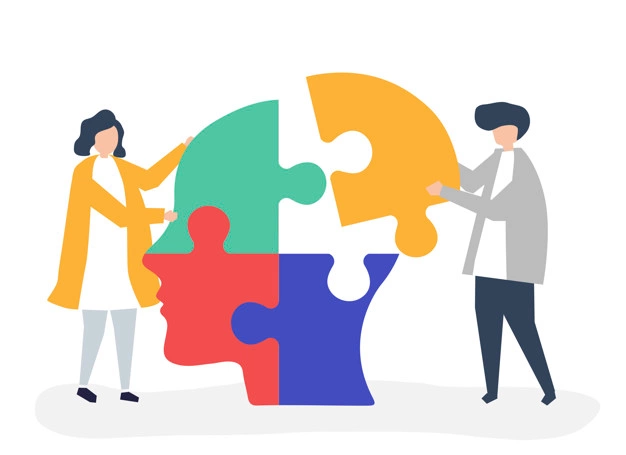Volume 1 Issue 6 December, 2011
ECT: How is it given? What happens during ECT administration? Is ECT painful?
In the contemporary practice of ECT it is administered under general anaesthesia, which is called modified ECT and is the standard recommended by many International Guidelines. The central point is to induce a seizure. As convulsions of a seizure can be violent and may cause fractures, particularly of the vertebrae and rarely other bones, generally a muscle relaxant (e.g. succinylcholine) is used. In order to mask the unpleasant sensation of muscle relaxant, a short‐acting general anaesthetic agent (e.g. thiopentone) is administered just before succinylcholine. When the patient is fully under sedation & when complete muscle relaxation is achieved, ventilation support is provided with oxygen and electrical stimulus is applied. So it is not a traumatic or painful procedure. The amount of electricity used is just enough to light a 100 W bulb for about 1 second. Specifically, most devices deliver about 60‐500 millicoloumbs of electrical charge in one session. Electricity is delivered for 0.4 to about 5 seconds. It should be noted that because of the resistance of the skull, only a small part of the electricity passes through the brain, without any burn marks on skin.
Typically the patient convulses for about a minute following stimulus administration. Ventilation support is continued till the patient resumes spontaneous breathing, which may take about 5‐10 minutes time. Overall, the procedure lasts for about 20‐30 minutes per patient. The patient then recovers in a recovery room supervised by the nursing staff. After about 1 hour, he/she would recover completely from the effect of anesthesia and is shifted back to the ward or sent home. In order to avoid aspiration under anesthesia, patients are advised to arrive in on empty stomach.
How does ECT act?
Despite being used for several decades and intense research, little is known about the mechanism of how ECT acts. At the risk of being too simplistic, suffice to say that ECT appears to ‘normalize’ the abnormal neurotransmitter systems of the diseased state of different psychiatric disorders.
Which conditions respond to ECT?
Depression, (especially severe ones with psychotic symptoms such as delusions & hallucinations and with high suicidality) and catatonic schizophrenia are 2 conditions, in which ECT scores over other treatments. In addition, ECT is useful in severe forms of mania and other types of schizophrenia especially, when pharmacological treatment is not possible or cannot wait: e.g., refusal of treatment by a psychotically disturbed patient; compromised oral intake; high suicidality; etc. Many clinicians use ECT in these conditions if they do not respond to pharmacological methods of treatment. It is not prudent to use ECT in situations other than these. In fact, indiscriminate use of ECT in situations where it is not warranted has brought bad reputation for the treatment method and for psychiatrists in general.
Which conditions respond to ECT?
Depression, (especially severe ones with psychotic symptoms such as delusions & hallucinations and with high suicidality) and catatonic schizophrenia are 2 conditions, in which ECT scores over other treatments. In addition, ECT is useful in severe forms of mania and other types of schizophrenia especially, when pharmacological treatment is not possible or cannot wait: e.g., refusal of treatment by a psychotically disturbed patient; compromised oral intake; high suicidality; etc. Many clinicians use ECT in these conditions if they do not respond to pharmacological methods of treatment. It is not prudent to use ECT in situations other than these. In fact, indiscriminate use of ECT in situations where it is not warranted has brought bad reputation for the treatment method and for psychiatrists in general.
What are the most important adverse effects?
ECT, as practiced according to the standards, does not produce any brain damage. On the contrary, a number of neuroprotective changes can be expected with ECT. The most important concerns are about (1) adverse effects of ECT on memory and other cognitive functions and (2) risk of medical adverse effects during an ECT session. Since the advent of ECT a lot has been done to reduce the cognitive side effects. However, it has temporary adverse effects on cognitive functions, especially memory but almost all patients achieve nearly complete recovery of memory within a few days. ECT causes increase in heart rate and blood pressure during the session. These effects last for about a few minutes and cause extra load on the heart. ECT may hence cause cardiac adverse effects in those who have ischemic heart disease, uncontrolled hypertension, etc. Pre‐anesthetic evaluation including cardiologist referral is important in this background. There are no absolute contraindications for ECT, even raised intracranial pressure being an important relative contraindication.
For how long is ECT administered?
ECT is typically a temporary treatment – usually administered about 3 times a week for about 2‐3 weeks to cause improvement in clinical condition. Following ECT, almost invariably the patients will require pharmacological & psychological treatments to sustain the improvement. Rarely some patients may not respond to any other treatment other than ECT. Such patients may require ‘maintenance’ ECT i.e., about once in 2‐4 weeks for several months. It should also be noted that once a patient receives ECT, he need not receive ECT each time he becomes ill. Indiscriminate use of ECT should be avoided.



